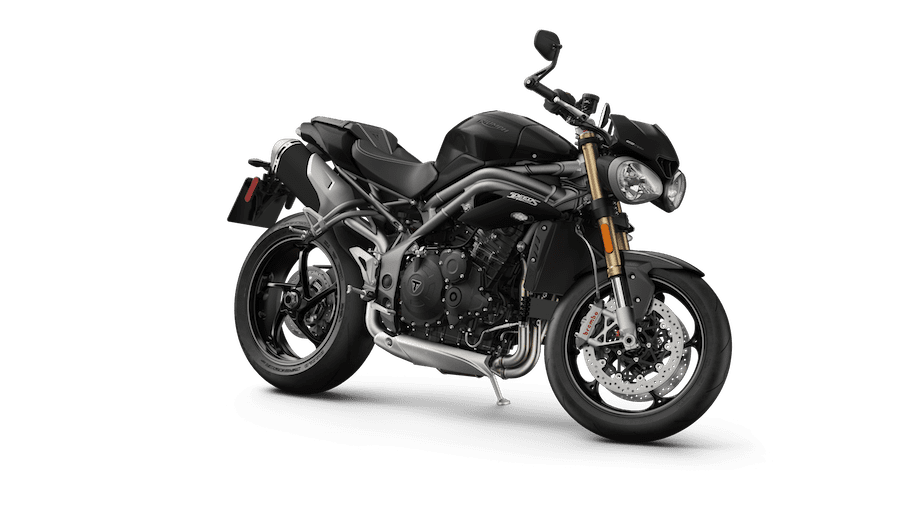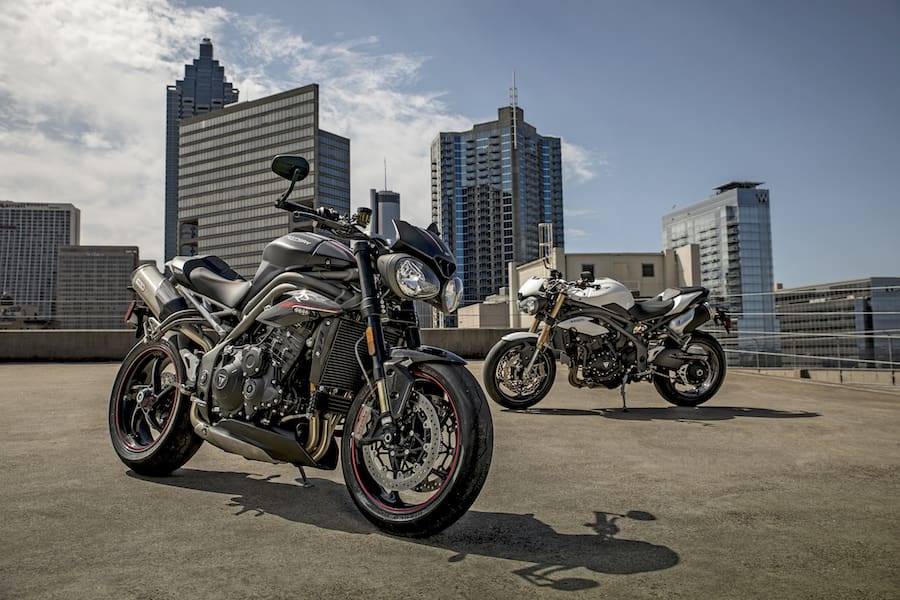You’re going to have to look pretty closely to spot the visual differences between the new 2018 Triumph Speed Triple 1050 models and their predecessors. But those familiar looks belie a host of changes under the skin that should offer a significantly different riding experience.
With no fewer than 105 new engine components, both versions of the revamped Speed Triple get a seven per cent power boost, from just under 103kW (138hp) to a fraction over 110kW (148hp), along with a torque increase from 112Nm to 117Nm.
More notably, the torque peak drops from 7850rpm to 7150rpm while the power peak rises from 9500rpm to 10,500rpm, along with a 1000rpm hike in the engine’s red line. The broader spread of performance means a racier top-end allied to a more muscular low-rev reaction.
The key changes include a new cylinder head, as we predicted when we saw spy shots of a new Speed Triple last October (AMCN Vol 67 No 09). As well as better gas flow, it gives increased compression and replaces the old bike’s external oil pipes with a neater internal design. Lower down, there are new pistons and lighter liners, a lighter crank assembly, starter motor and alternator, and a new sump. By cutting the engine’s rotating mass Triumph reckons it’s made the new unit more responsive and quicker revving as well as increasing its peak revving ability.
There’s a new exhaust system, too, with lighter headers, a larger catalyst and redesigned silencers, while the new RS model – which replaces the Speed Triple R – gets lighter Arrow end cans as standard.
The electronics are the other big news. Both machines get multiple riding modes – four for the S and five for the RS, which adds a ‘track’ setting on top of the standard model’s road, rain, sport and rider-defined presets. There’s a new full colour, five-inch, configurable TFT screen, while the switchgear is Triumph’s latest illuminated kit, complete with cruise control and a five-way joystick to navigate through the adjustable electronic settings.

The RS gets even more electrickery, including a Continental IMU that enables cornering traction control and cornering ABS. It also gains a keyless ignition and keyless steering lock, plus a lap timer.
Chassis-wise, the bikes are much the same as their predecessors. The S gets fully–adjustable Showa suspension at both ends, while the RS uses an Öhlins NIX 30 fork and a TTX 36 shock. And both bikes still use Brembo radial calipers at the front and a Nissin rear brake. The only real change is they now have light five-spoke wheels instead of 10-spokers, while the RS is claimed to be 3kg lighter than the S (189kg vs 192kg, dry) thanks mainly to a few carbon-fibre panels and the Arrow exhaust silencers.
The body panels are unchanged, so you’ll have to look for the wheels, exhausts, TFT instruments or the badging to pick out the new model from the old. Australian pricing and availability are yet to be announced but the prices aren’t likely to be massively different from the current Speed Triple S and R models’ RRPs.
By Ben Purvis












